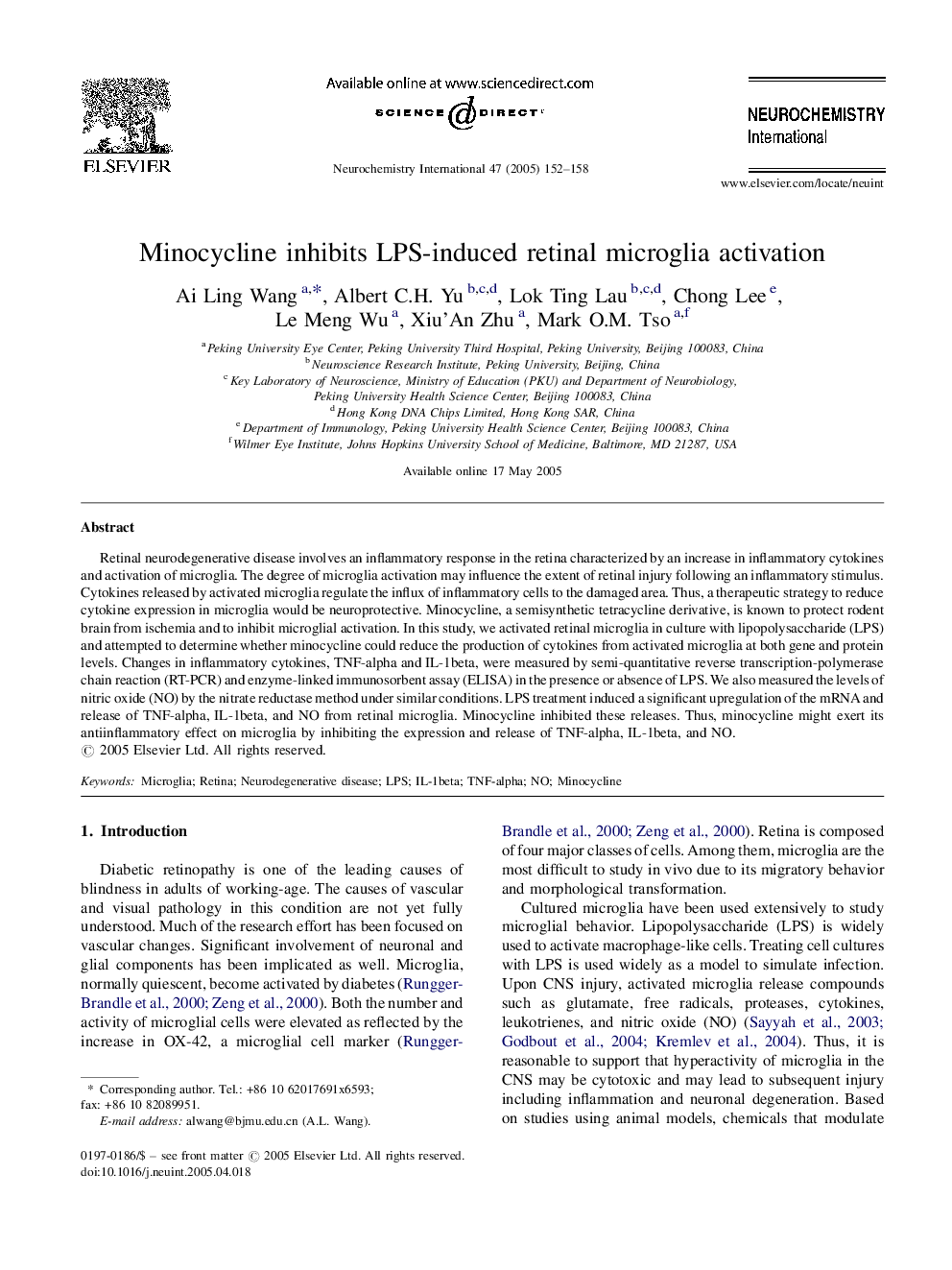| Article ID | Journal | Published Year | Pages | File Type |
|---|---|---|---|---|
| 9916217 | Neurochemistry International | 2005 | 7 Pages |
Abstract
Retinal neurodegenerative disease involves an inflammatory response in the retina characterized by an increase in inflammatory cytokines and activation of microglia. The degree of microglia activation may influence the extent of retinal injury following an inflammatory stimulus. Cytokines released by activated microglia regulate the influx of inflammatory cells to the damaged area. Thus, a therapeutic strategy to reduce cytokine expression in microglia would be neuroprotective. Minocycline, a semisynthetic tetracycline derivative, is known to protect rodent brain from ischemia and to inhibit microglial activation. In this study, we activated retinal microglia in culture with lipopolysaccharide (LPS) and attempted to determine whether minocycline could reduce the production of cytokines from activated microglia at both gene and protein levels. Changes in inflammatory cytokines, TNF-alpha and IL-1beta, were measured by semi-quantitative reverse transcription-polymerase chain reaction (RT-PCR) and enzyme-linked immunosorbent assay (ELISA) in the presence or absence of LPS. We also measured the levels of nitric oxide (NO) by the nitrate reductase method under similar conditions. LPS treatment induced a significant upregulation of the mRNA and release of TNF-alpha, IL-1beta, and NO from retinal microglia. Minocycline inhibited these releases. Thus, minocycline might exert its antiinflammatory effect on microglia by inhibiting the expression and release of TNF-alpha, IL-1beta, and NO.
Related Topics
Life Sciences
Biochemistry, Genetics and Molecular Biology
Cell Biology
Authors
Ai Ling Wang, Albert C.H. Yu, Lok Ting Lau, Chong Lee, Le Meng Wu, Xiu'An Zhu, Mark O.M. Tso,
